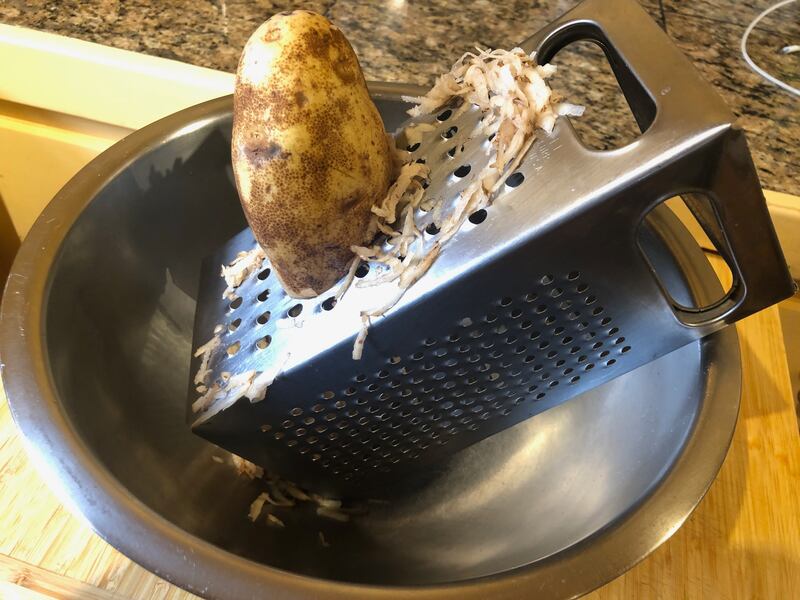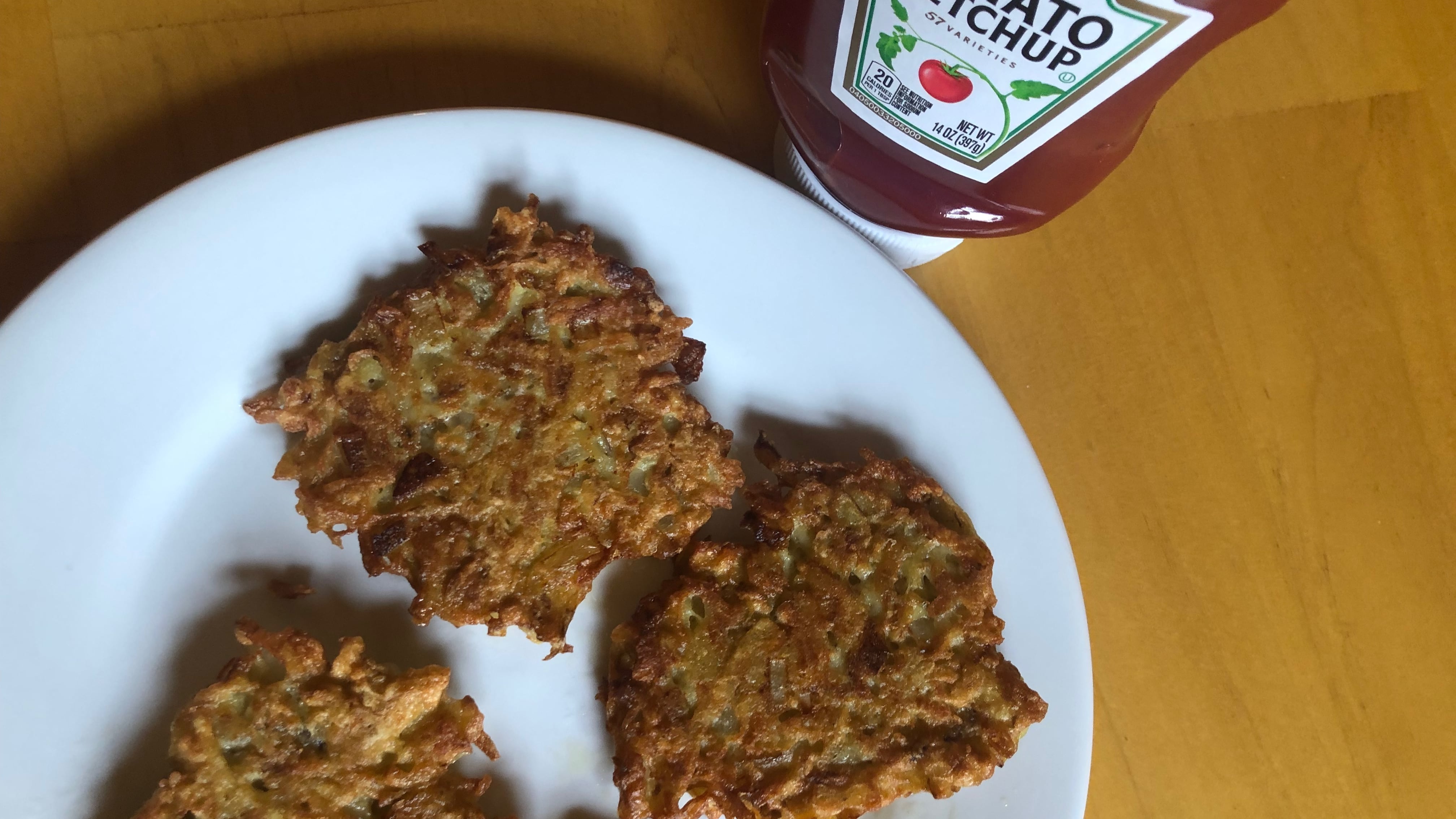Jim Dixon wrote about food for WW for more than 20 years, but these days most of his time is spent at his olive oil-focused specialty food business Wellspent Market. Jim’s always loved to eat, and he encourages his customers to cook by sending them recipes every week through his newsletter. We’re happy to have him back creating some special dishes just for WW readers.
I’m just a country goy, but many years ago I inadvertently made the quintessential Hanukkah food—latkes—while tweaking the process for hash browns. I was aiming for a faster-cooking version of the grated fried potatoes served in greasy spoons everywhere. They’re made from processed, precooked frozen spuds and nearly impossible to recreate at home using actual potatoes.
But I wanted something similar, so I grated potatoes, mixed in egg and flour to hold things together, and fried them into crispy fritters I just called potato pancakes. As my cultural and culinary horizons broadened, I learned that I was making latkes.
Or, to be more precise, potato latkes. Latke comes from oladka, the Ukrainian word for pancake, and potatoes weren’t involved until the 1800s. The first Hanukkah latkes were actually cassola, Roman ricotta pancakes, and they utilized both oil and dairy, the two traditional Hanukkah foods (the dairy comes from the story of Judith, who fed an Assyrian general salty cheese that led him to drink too much wine and pass out so she could cut off his head). Eating latkes and other foods fried in oil pays homage to the miracle of the oil, part of the Hanukkah celebration.
Our large blended family includes a couple of Jewish stepsons, and they report that my latkes compare favorably with the hundreds that they’ve consumed. Since I was shooting for hash browns originally, I’ve always eaten mine with ketchup instead of the traditional sour cream and applesauce. The boys tell me that, at least in the celebrations they attend, which are more culturally Jewish than religious, there’s always a few folks in the kitchen sneaking ketchup on their latkes, too. When my own Jewish friends complain, I remind them that it’s the miracle of the oil, not the applesauce and sour cream.
This recipe makes about a dozen latkes and can be easily scaled, especially since the ingredient measurements are approximations. Latkes reheat nicely on the stovetop, and they’re particularly tasty topped with cheese and served in a soft bun with burger fixings.

Secular Latkes
2 medium potatoes (Russets or yellow potatoes work best)
2 eggs
1/2 cup flour, plus more as needed
1 teaspoon salt
Extra-virgin olive oil for frying
Ketchup for serving (or sour cream and applesauce)
Use a box grater to grate the potatoes directly into a large mixing bowl. (Or grate with a food processor, then transfer to a bowl.) Push the grated spuds to one side of the bowl, grab a small handful, hold it over the sink and squeeze as much liquid as possible out as possible, then return it to the empty side of the bowl. Repeat until you’ve squeezed all the grated potato.
Mix in egg, flour and salt. Heat a skillet over medium high and add enough olive oil to cover the bottom about 1/8-inch deep. Use a spoon to gently drop about a quarter cup of the egg mix into the skillet and form roughly 3-inch wide circular pancakes. Cook a few at a time, but don’t crowd them. After about 3 minutes, gently flip them over and brown the other side. When brown and crispy on both sides, remove and keep warm in a low oven while cooking the rest. Serve hot with ketchup (or whatever).
